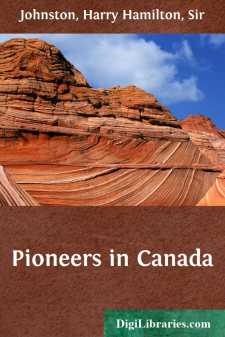Categories
- Antiques & Collectibles 13
- Architecture 36
- Art 48
- Bibles 22
- Biography & Autobiography 813
- Body, Mind & Spirit 142
- Business & Economics 28
- Children's Books 17
- Children's Fiction 14
- Computers 4
- Cooking 94
- Crafts & Hobbies 4
- Drama 346
- Education 46
- Family & Relationships 57
- Fiction 11829
- Games 19
- Gardening 17
- Health & Fitness 34
- History 1377
- House & Home 1
- Humor 147
- Juvenile Fiction 1873
- Juvenile Nonfiction 202
- Language Arts & Disciplines 88
- Law 16
- Literary Collections 686
- Literary Criticism 179
- Mathematics 13
- Medical 41
- Music 40
- Nature 179
- Non-Classifiable 1768
- Performing Arts 7
- Periodicals 1453
- Philosophy 64
- Photography 2
- Poetry 896
- Political Science 203
- Psychology 42
- Reference 154
- Religion 513
- Science 126
- Self-Help 84
- Social Science 81
- Sports & Recreation 34
- Study Aids 3
- Technology & Engineering 59
- Transportation 23
- Travel 463
- True Crime 29
Pioneers in Canada
Description:
Excerpt
CHAPTER I
The White Man's Discovery of North America
So far as our knowledge goes, it is almost a matter of certainty that Man originated in the Old World—in Asia possibly. Long after this wonderful event in the Earth's history, when the human species was spread over a good deal of Asia, Europe, and Africa, migration to the American continents began in attempts to find new feeding grounds and unoccupied areas for hunting and fishing. How many thousands or hundreds of thousands of years ago it was since the first men entered America we do not yet know, any more than we can determine the route by which they travelled from Asia. Curiously enough, the oldest traces of man as yet discovered in the New World are not only in South America, but in the south-eastern parts of South America. Although the most obvious recent land connection between the Old and New Worlds is the Aleutian chain of islands connecting Kamschatka with Alaska, the ethnologist is occasionally led to think by certain evidence that there may, both earlier and later, have existed another way of reaching western America from south-eastern Asia through Pacific archipelagoes and islets now sunk below the sea. In any case it seems quite probable that men of Mongolian or Polynesian type reached America on its western coasts long before the European came from the north-east and east, and that they were helped on this long journey by touching at islands since submerged by earthquake shocks or tidal waves.
The aboriginal natives of North and South America seem to be of entirely Asiatic origin; and such resemblances as there are between the North-American Indians and the peoples of northern Europe do not arise (we believe) from any ancient colonization of America from western or northern Europe, but mainly from the fact that the North-American Indians and the Eskimo (two distinct types of people) are descended from the same human stocks as the ancient populations of the northern part of Europe and Asia.
It was—we think—from the far north-west of Europe that America was first visited by the true White man, though there has been an ancient immigration of imperfect "White" men (Ainu) from Kamschatka. Three or four hundred years after the birth of Christ there were great race movements in northern and central Europe, due to an increase of population and insufficiency of food. Not only did these white barbarians (though they were not as barbarous as we were led to think by Greek and Roman literature) invade southern Europe, North Africa, and Asia Minor, but from the fourth century of the Christian era onwards they began to cross over to England and Scotland. At the same time they took more complete possession of Scandinavia, driving north before their advance the more primitive peoples like the Lapps and Finns, who were allied to the stock from which arose both the Eskimo and the Amerindian. All this time the Goths and Scandinavians were either learning ideas of navigation from the Romans of the Mediterranean or the Greeks of the Black Sea, or they were inventing for themselves better ways of constructing ships; and although they propelled them mainly by oars, they used masts and sails as well. Having got over the fear of the sea sufficiently to reach the coasts of England and Scotland, the Hebrides, Orkneys, and Shetlands, they became still more venturesome in their voyages from Norway, until they discovered the Faroe Archipelago (which tradition says they found inhabited by wild sheep), and then the large island of Iceland, which had, however, already been reached and settled by the northern Irish....



